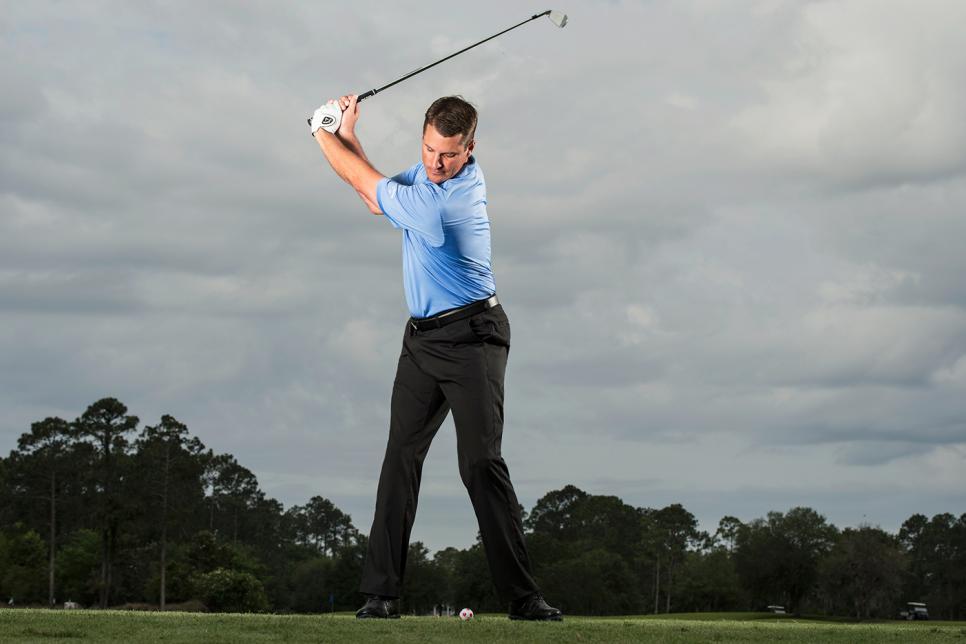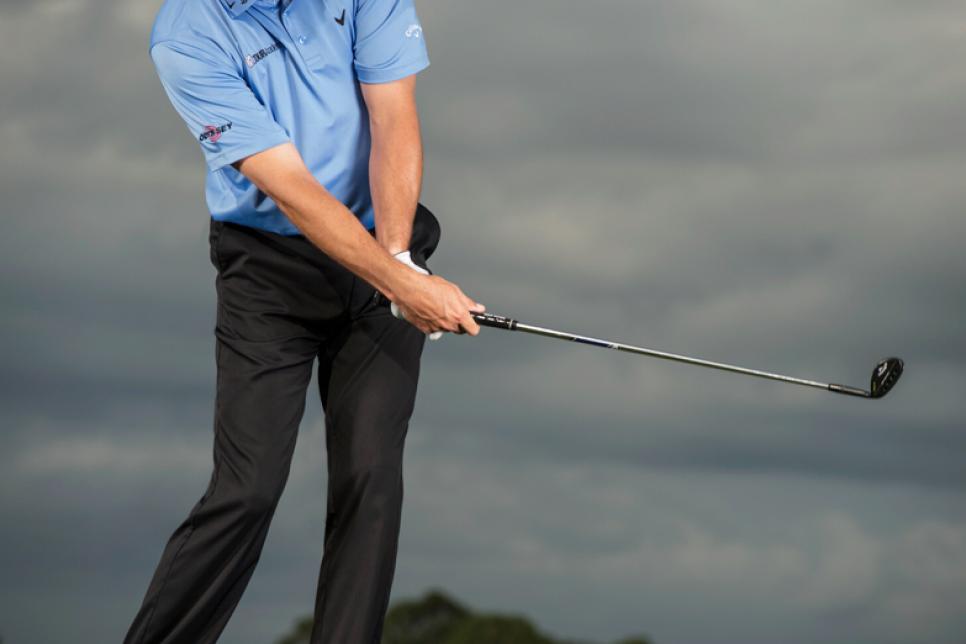Instruction
5-Minute Clinic: Try This Handy Way To Play Better Golf

Your hands are the only connection you have to a golf club, so it's logical that if you want to improve your swing, focusing on their positions and movement is a smart way to go about it. Remember, it's your hands that control the clubface, and its orientation at impact is the biggest factor in what happens to the ball. That means if you work on hand action, you're essentially working on ball-flight control. From your driver to your irons to your wedges and even the putter, use these tips to get hold of a better golf game. —With Ron Kaspriske
1.) TEE BALLS
Swing up and in to smash it
Golf-ball radar systems like TrackMan prove that you should hit drives with an ascending blow. To pattern this upswing, focus on both hands moving upward as they approach the ball and inward after impact. Here's how: Set the driver on the ground a few feet behind a teed-up ball (below, left). Then make half-swings sweeping the driver along the turf and hitting up on the ball (below, right). Sense the hand movements and copy them on the course.

‘Hitting drives on the upswing keeps the ball in the air longer with less spin.’

2.) BUNKER PLAY
Stay loose on greenside sand shots
Don't shorten up and brace for impact in the bunker. You want your swing to feel long and unhurried. Your left wrist should cup at the top as if it's bending from the weight of the clubhead. Make practice swings with your left hand only and, when you reach the top, check that wrist and make sure it's more cupped (above). This will help open the clubface. From here, keep the hands relaxed when you swing down, and let the club glide through the sand.
3.) IRON GAME
Support the club at the top
A good backswing is critical to hitting crisp irons. Focus on two key spots for your hand movements: (1) About halfway back, hinge your wrists moving the clubhead skyward and aligned with the left forearm. Feel the heel pad of the right hand pushing against the thumb of the left. (2) As you reach the top, sense that the bottom three fingers of the left hand are gripping the handle and are curled toward the right palm, which should be supporting the club's weight (below). Now you're ready to start down.

4.) CHIPPING ACTION
Maintain the dish
Your goal is to make ball-first contact when you chip. But what you don't want is to swing down so steeply that the leading edge of the club digs into the turf, gets stuck, and you chunk the shot. You need a shallower approach so the wedge glides along the turf through impact. You can get that by creating a little dish in your left wrist at address (below), and maintaining that slightly cupped position when you swing. The shaft will still lean slightly forward at address so you can hit down on the ball, but the dish ensures the club doesn't stub. That's how you hit it crisply.

“Hit down on the ball, but don’t let the club dig into the turf.”
5.) LOFTED WEDGES
Turn over your pitch shots
Many golfers think they have to hold the face skyward on shorter wedge shots to hit it high and soft. This leads to distance-control issues, because the club isn't making solid contact. Instead, swing so your hands rotate the clubface down and to the left as it passes through the impact zone. This is not a flip in which the right hand scoops under the left. The right should rotate on top of the left, and the shaft should be in line with the target with the toe pointing up after impact (below). The shot will feel solid, yet the ball will still fly high and stop quickly—with added backspin.

6.) ON THE GREEN
Take your hands out of the stroke
Active hands can do more harm than good when you're on the green, because they make it difficult to keep the putterface square to your putting line. Instead, when you swing back and through, keep your grip light and feel like the motion of the putter is being generated by a small turning, not rocking, of the shoulders. If the hands stay passive, this slight shoulder turn will allow the face to move on a small arc yet remain square to your putting line. Better face control means more made putts.
Travis Fulton, a Golf Digest Best Young Teacher, runs the Golf Channel Academy at the World Golf Village in St. Augustine, Fla.